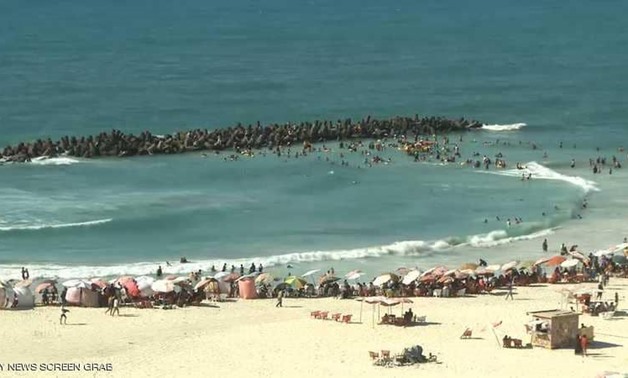
FILE – Al-Nakheel (Palm) beach
CAIRO – 24 July 2018: Governor of Alexandria Mohamed Sultan ordered Tuesday the closure of Agami’s Al-Nakheel (Palm) beach, one of Egypt's most dangerous seashores, due to the increasing drowning cases reported.
Sultan ordered officials to take all legal procedures to close what people name the “death beach,” and prevent citizens from entering the beach or swimming at it.
Sultan said that a committee from the Egyptian Public Authority for Shore Protection will be sent to check the beach and the sea barriers, and take required procedures to protect citizens and help stop drowning incidents at the beach.
More than 20 people reportedly died in recent months while swimming at Al-Nakheel beach.
Sultan earlier in July remarked that ten people were swept far into the sea by the stream; six of them drowned, and only one body was found, while four other people could be saved.
He had announced that the Beach may be closed due to the waves’ high speed and whirlpools, which caused an increase in drowning cases.
In a telephone call with “DMC Evening” TV program, Sultan referred that most of those who drowned are not from Alexandria, and did not follow the safety and security guidelines.
Previously, many Parliament members called on the government to close Al Nakheel Beach in Alexandria where many deaths had taken place, stating that this beach annually ends the lives of “dozens of young people” because the rough rocks on the beach create dangerous currents and cause drowning.
Earlier, a number of social media users launched a campaign called “Close Al Nakheel Beach,” in which they warned people about the dangers of swimming at that beach, stating that no rescue divers are found there.
Alexandria beaches have witnessed large waves since Sunday, causing great difficulty for swimmers especially in beaches that do not have wave barriers.
Major General Ahmed Hijazi, head of the Central Administration of Tourism and Resorts, told Egypt Today that the drowning cases happened after the working hours of the beaches’ divers at 5 a.m., and some of the cases swam in rocky places not suitable for swimming such as the area below San Stefano Bridge. He advised vacationers to swim during divers’ working hours, starting 6 am.
To prevent more drowning cases, Hijazi remarked that a cooperation protocol is signed with the Faculty of nursing to provide a paramedic at each beach, in addition to the protocol signed with the Faculty of Physical Education that makes scuba divers available as seasonal workers.
Comments
Leave a Comment